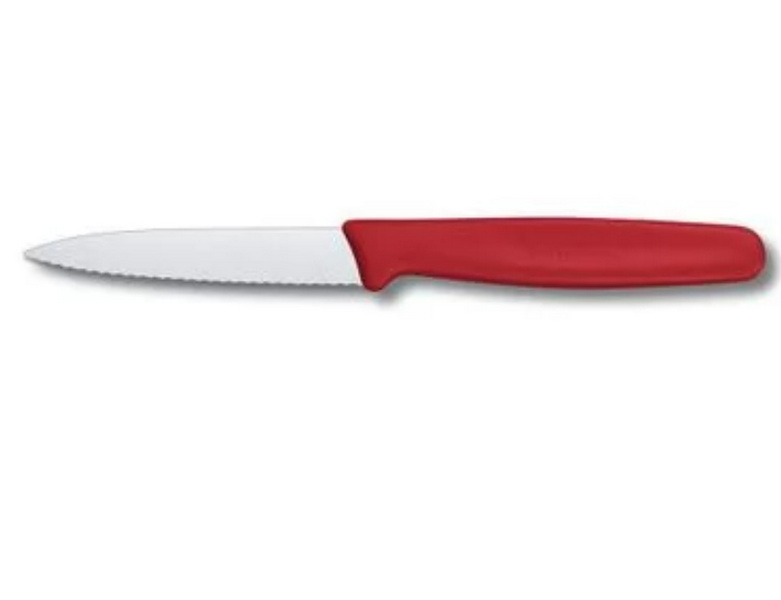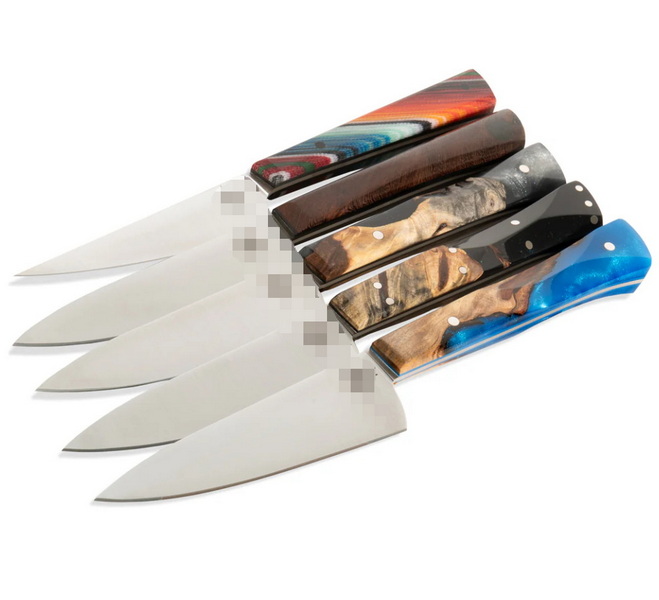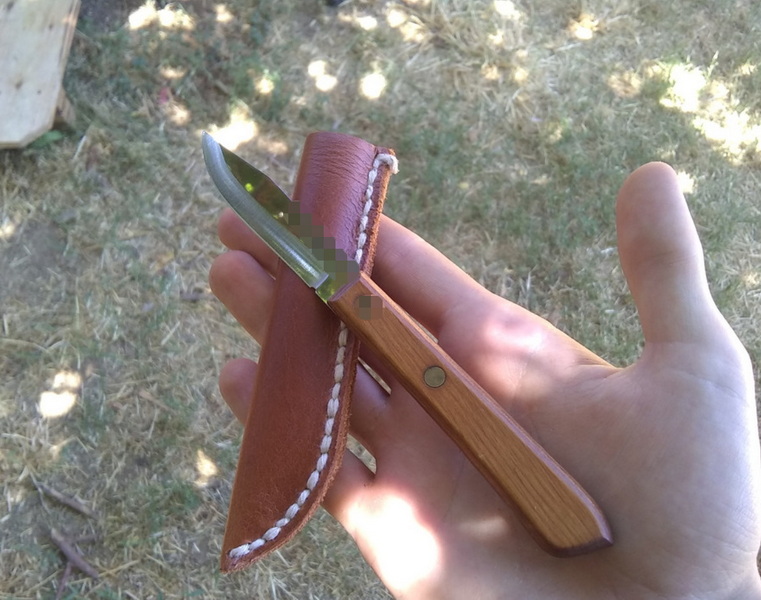- All
- Product Name
- Product Keyword
- Product Model
- Product Summary
- Product Description
- Multi Field Search
Views: 222 Author: Ann Publish Time: 2025-10-25 Origin: Site











Content Menu
● What Makes a Paring Knife Ideal for Small Hand Users?
● Key Design Features of Lightweight Paring Knives
● Top Lightweight Paring Knives for Small Hand Users
● Practical Uses for Lightweight Paring Knives
● Care and Maintenance of Paring Knives
● How OEM Brands Can Customize Lightweight Paring Knives
● Frequently Asked Questions (FAQ)
>> Q1: How do I pick the best lightweight Paring Knife for small hands?
>> Q2: What handle materials are best for wet kitchen environments?
>> Q3: How often should I sharpen my Paring Knife?
>> Q4: Are ceramic Paring Knives practical for daily use?
>> Q5: What packaging options enhance OEM appeal?
Paring Knives are indispensable tools in every kitchen, designed for intricate tasks such as peeling, trimming, and slicing small fruits and vegetables. For users with small hands, selecting a lightweight Paring Knife is crucial to ensure comfort, control, and precision during extended use. This article highlights the best lightweight Paring Knives crafted specifically for small hand users, focusing on ergonomic design, material quality, practical uses, and considerations for OEM brands catering to international markets.

Paring Knives typically feature blade lengths ranging from 2.5 to 4 inches, enabling fine control during delicate kitchen tasks. For users with smaller hands, weight and handle design profoundly impact the knife's usability. A lightweight knife reduces hand fatigue and improves maneuverability, allowing smooth cutting motions and better precision. Ergonomic handle shapes tailored for smaller grips offer secure holds that prevent slipping and promote natural wrist movement.
- Blade Length and Shape: Smaller blades between 2.5 to 3.5 inches provide excellent control, with curved edges for slicing and pointed tips for piercing.
- Blade Material: Premium stainless steels such as high-carbon stainless, VG-10, or advanced alloys balance edge retention and corrosion resistance.
- Handle Engineering: Handles made from lightweight materials like POM, pakkawood, or reinforced polypropylene combine durability with a comfortable grip.
- Weight Distribution: Balanced designs with full tangs enhance control by distributing weight evenly.
- Texture and Grip: Slightly contoured, non-slip handles designed to fit small hands give confidence during precision work.
Material choice directly impacts the knife's performance and longevity. Lightweight Paring Knives often use:
Blade Materials:
- High-carbon stainless steel for resilience and ease of sharpening
- VG-10 for superior edge retention and corrosion resistance
- Ceramic blades for ultra-lightweight, though more brittle
Handles:
- Polypropylene and POM offer moisture resistance and lightness
- Pakkawood combines classic aesthetics with durability
- Composite materials deliver textured grips for safety
- Tang Design: Full tang construction is preferred for stability yet can be slimmed down for weight savings.

Here are top picks for lightweight Paring Knives designed for users with smaller hands:
| Model | Blade Length | Handle Material | Weight | Key Features |
|---|---|---|---|---|
| Precision A | 2.5 in | POM | 50 grams | Slim blade, ergonomic grip |
| Pro-Grade B | 3.0 in | Polypropylene | 60 grams | Balanced full tang, slip-resistant |
| Ergonomic C | 3.5 in | Pakkawood | 65 grams | Contoured handle, classic finish |
| Japanese D | 2.75 in | Composite | 55 grams | Fine tip, lightweight, precise edge |
| Ceramic E | 2.5 in | Plastic | 40 grams | Ultra-light blade, stain resistant |
These models balance precision and comfort, tapering weight and size to suit small hands, and provide superior control for meticulous kitchen work. Each offers scope for OEM branding with customizable handles, blade finishes, and colors.
- Peeling and Coring: Lightweight Paring Knives excel when peeling fruits like apples and nectarines because their nimble blades allow controlled, tight peeling motions.
- Garnishing: Crafting delicate vegetable and fruit garnishes demands the fine tip and exact control achievable with a lightweight Paring Knife.
- Trimming and Deveining: The narrow blade can deftly remove shrimp veins or trim small imperfections on vegetables without effort.
- Segmenting Citrus: Accurately segmenting oranges and lemons becomes easier with small, balanced knives that permit intricate cuts.
- Cutting Small Fruits: Slicing small fruits uniformly, such as strawberries or cherry tomatoes, benefits from the lightness and precision of these knives.
To maximize the life and performance of lightweight Paring Knives:
- Always hand wash and dry immediately to prevent corrosion, especially for high-carbon steel blades.
- Hone regularly to maintain sharpness between sharpenings.
- Sharpen as needed using whetstones or sharpening rods suited to fine blades.
- Store in a dedicated knife block, magnetic strip, or protective sheath to prevent damage.
- Avoid cutting on hard surfaces like glass or stone; opt for wood or plastic cutting boards.
OEM kitchen knife manufacturers can meet global market demands by offering:
- Custom handle colors and materials tailored to regional preferences.
- Logo embossing or laser engraving on blades or handles.
- Packaging innovations with ergonomic usage instructions.
- Options for built-in blade guards or knife block compatibility for gift sets.
- Special coatings or finishes to reduce staining and enhance durability.
Tailoring designs to small-hand users expands market reach and enhances brand differentiation worldwide.
Main Keyword: Paring Knives
Supporting Keywords: Lightweight Paring Knife, Ergonomic Paring Knife, Small hand kitchen knife, Precision Paring Knife, OEM Paring Knife customization
Maintain a natural keyword density around 1.5%-2%, avoid stuffing, and embed keywords in headings, meta descriptions, and image alt attributes.
Choosing the right lightweight Paring Knife tailored for small hand users dramatically improves kitchen efficiency, comfort, and precision. These knives reduce fatigue and allow delicate cutting tasks to be executed with confidence. For OEM manufacturers, producing customizable lightweight Paring Knives opens opportunities for global market differentiation and satisfying consumer needs for ergonomic kitchen tools.

A1: Look for knives with blade lengths between 2.5 and 3.5 inches, lightweight materials under 70 grams, and ergonomically shaped handles that fit smaller grips comfortably.
A2: Polypropylene and POM handles offer excellent water resistance and slip prevention, making them ideal for wet or oily conditions.
A3: Depending on use, sharpen once every 3-6 months and hone more frequently to maintain edge sharpness.
A4: Yes, ceramic knives are ultra-lightweight and hold their edge longer, but they are brittle and require careful handling to avoid chipping.
A5: Custom printed boxes, eco-friendly materials, gift sets with knife blocks, and clear usage guides appeal strongly in international retail markets.
The Ultimate Professional Knives for Halal Butchery in Middle Eastern Kitchens
Chef Knife Size Guide: Choosing Between 6″, 8″, 10″, And 12″
Custom Knife Handles: How To Design A Chef Knife That Fits Your Hand Perfectly
Chef Knife Surface Treatments Guide: From Polished Migaki To Damascus Patterns
Inside Our Professional Knife Sample Room: Quality You Can See
Universal Knife Block Buying Guide: Modern Acrylic & ABS Knife Holders for Professional Kitchens
Universal Knife Block: The Complete Guide To Modern, Hygienic Knife Storage
The Complete Guide To Red Handle Knife Sets: Style Meets Functionality in The Kitchen
Professional Knives for Halal Butchery And Middle Eastern Cuisine